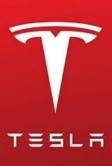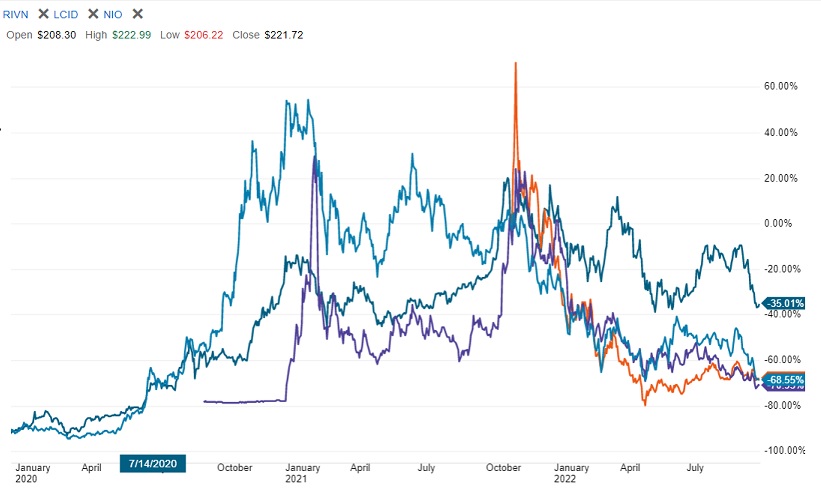Tesla profile
Founding of the company
Martin Eberhard and Marc Tarpenning founded Tesla in 2003, naming the company after Nikola Tesla, who invented the Tesla coil. The goal is to produce an electric vehicle that offers the consumer market a premium vehicle that combines powerful performance with a combination of technologies.
Musk joined Tesla in 2008 as chief executive and chairman of the board, and is posthumously considered one of the company’s founders. The company listed on the Nasdaq Stock Exchange in June 2010 under the ticker symbol TSLA; 13.3 million shares of common stock were issued at $17.00 per share at the time of the IPO.
Milesstones worthy of note
Tesla has been unprofitable for most of its 19-year corporate history. 2020 is the first year in the company’s history to turn over a profit for the entire year. It took the company 17 years to turn a loss into a profit. Primarily, the company earns significant revenue from car sales and regulatory credits (aka carbon rights, see book 5-8 in my book “The Rules of 10 Baggers“). Achieved revenue of $31.5 billion (only $1.58 billion from regulated credit payments from other automakers) and net income of $721 million. That’s a huge earnings turnaround from the previous year’s loss of $862 million in 2019.
In 2020, it will be able to increase sales in Europe and China, while increasing production of the fourth model, the Model Y. The new plants in Berlin and Austin have already started mass production. According to the financial report for the second quarter of 2022, the Berlin plant produced 1,000 cars a week, which is an important milestone for Tesla; because it does not have to rely only on the capacity supply of the two factories in California and Shanghai.
In fiscal 2021, as much as 44.5% of Tesla’s revenue came from the United States, an increase of 57.6% over fiscal 2020. Revenue from China more than doubled year-over-year and now accounts for about 25.7% of total revenue. The remaining 29.7% of annual income comes from the rest of the world.
What’s in my book about Tesla
I’ve discussed this company in my last two books. In order to avoid repeating the content, the content mentioned in the book will not be repeated here:
- The book “The Rules of Super Growth Stocks Investing“:
- 1-2
- 4-2
- The book “The Rules of 10 Baggers” spends a lot of space and has a very in-depth discussion of this company, especially sections 5-8. include:
- 3-3 Electric Vehicle Industry
- 5-8 Tesla
- 7-2 How Tesla Comes Through
Main products
Tesla currently has two major product lines, including electric vehicles and energy.
Electric vehicles
| Model | Delivery year | US first-generation base model price | Purpose |
| Roadster | 2008 | 109,000 | Based on the two-door two-seater electric sports vehicle based on the Lotus Evora, in November 2017, Tesla released a new Roadster |
| Model S | 2012 | 57,400 | High-end electric vehicle |
| Model X | 2015 | 120,990 | 5/6/7 seats multiple purpose electric vehicle |
| Model 3 | 2017 | 35,000 | Entry level electric vehicle |
| Model Y | 2020 | 64,900 | Pure electric mid-size SUV |
| Semi Truck | 2022 | 150,000 | Semi-trailer heavy-duty electric truck |
| Cybertruck | 2023 | 39,900 | Electric vehicle pickup |
Energy
| Products | Purpose |
| Powerwall | Lithium-ion battery energy storage systems are suitable for storing electricity from renewable energy sources, such as solar and wind energy, for use in homes and businesses at night or when there is no wind. |
| Solar Roof | Solar roof tiles that convert sunlight into electricity to power your home. |
Business performance
Comparison to competitors
| Year 2021 | Tesla | Rivian | Lucid | Nio |
| Total revenue (USD million) | 53,823 +70.67% | 55 (0 in 2020) | 27.1 +577.5% | 5,686.3 +128.31% |
| Electric vehicle | 51,000 +72.8% | |||
| Energy | 2,800 +39.9% | |||
| Gross margin | 25.28% | (845.45)% | (471.59)% | 18.88% |
| Operating margin | 12.12% | (7672.73)% | (5647.23)% | (12.44)% |
| Net margin | 10.49% | (8523.64)% | (9519.56)% | (29.34)% |
Stock valuation comparison
| Index (10/13/2022) | Tesla | Rivian | Lucid | Nio |
| Market capitalization (USD billion) | 694.75 | 29.78 | 21.76 | 21.35 |
| Share price | 221.72 | 32.5 | 13.01 | 12.78 |
| P/E | 79.84 | 0 | 0 | 0 |
| P/S | 11.06 | 56.1 | 120.54 | 3.72 |
| Dividend yield | 0 | 0 | 0 | 0 |
Electric vehicle
Tesla said in its earnings report that its vehicle deliveries rose 87% in fiscal 2021.
This segment accounts for 95% of the company’s total revenue and overall gross profit, and also includes non-warranty aftermarket vehicle services, used car sales, retail merchandise and vehicle insurance revenue. Gross profit for the segment in fiscal 2021 was $13.7 billion, an increase of 107.7% from the previous year. Revenue rose 72.8% to $51 billion.
Auto insurance
Since Tesla has all the details of his Tesla car owners and cars, it is possible to accurately calculate the rate of a reasonable car insurance. Also, Tesla is usually able to offer significantly lower rates than other auto insurance policies on the market. Musk himself claims that Tesla auto insurance is 20% cheaper than general auto insurance.
Direct-sale business model
Tesla makes a variety of electric vehicle models, and its sales and marketing strategy has been to sell directly to consumers rather than enter the traditional car market through the traditional model of dealer sales.
Services
Tesla provides repair facilities for its electric vehicles and their energy solutions. As the only recommended repair agent, Tesla owners can only have their vehicles repaired through an approved Tesla repair center.
The company also provides service and installation services for its green energy solutions such as Powerwall.
Charging station charges
Tesla charges owners to use its Supercharger network across the country and around the world. In the US, for example, it costs about $20 to $25 to fully charge an 85 kWh Tesla Model S at a Tesla Supercharger.
Prepaid
Because Tesla’s electric cars are so popular, customers even charge deposits for products that have not yet come out, usually more than $1,000, in order to ask Tesla to have a new car as soon as possible when the car starts to be delivered in the future. Opportunity.
Carbon rights
Not everyone is aware that Tesla’s main source of revenue (roughly 20%) comes from carbon credits from the U.S. government’s various clean energy programs because it’s an electric car maker.
These carbon rights are tradable certificates that give companies the right to emit and pollute a certain amount of carbon dioxide into the environment. Tesla sells about $279 million to $679 million in carbon rights each quarter to other traditional automakers, including Fiat Chrysler and General Motors.
Tesla has said that sales of carbon rights will decline over time. For details on Tesla’s carbon rights, see 5-8 of “The Rules of 10 Baggers”
Competitors
Including major auto companies, such as General Motors (ticker: GM), Ford (ticker: F) and Volkswagen (ticker: VWAGY), BMW (ticker: BMWYY), and Daimler (ticker: DDAIF); general pure electric vehicle Rivian (ticker: RIVN), Lucid (ticker: LCID), NIO (ticker: NIO).

Company’s long-term goals
At the investment meeting in August 2022, the company’s long-term important goals were mentioned. Musk set for Tesla. In fact, he has mentioned these items before, but he just reconfirmed them on a formal occasion:
- More than 100 million electric vehicles will be sold in the next 10 years
- Deliver more than 20 million electric vehicles annually
- 10 to 12 fabs in total
- Bringing EV prices below $25,000
Share price
Stock split
Tesla has had a five-for-one stock split in 2020 and a three-for-one stock split in 2022.
Share price trending in past 3 years
As shown in the figure below, in the past three years from 10/13/2022 to 1/1/2020, Tesla (TSLA) fell by 35%, NIO (NIO) fell by 68.55%, Rivian (RIVN) fell by 65%. West Germany (LCID) fell 70%.

Related articles
- “How does Tesla make money?“
- “The bright future of the electric vehicle industry“
- “Tesla has lost edge in China“
- “The future electric vehicle giant Volkswagen“
- “How to screen potential qualifiers for electric vehicles?“
Disclaimer
- The content of this site is the author’s personal opinions and is for reference only. I am not responsible for the correctness, opinions, and immediacy of the content and information of the article. Readers must make their own judgments.
- I shall not be liable for any damages or other legal liabilities for the direct or indirect losses caused by the readers’ direct or indirect reliance on and reference to the information on this site, or all the responsibilities arising therefrom, as a result of any investment behavior.